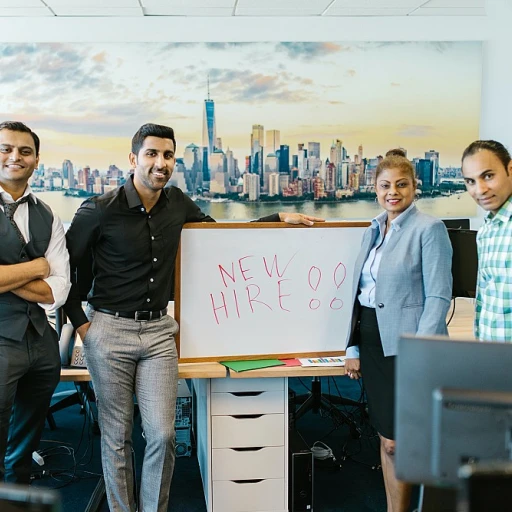Understanding the Pharmaceutical Landscape
The Pharmaceutical Industry: A Complex Landscape
The pharmaceutical industry is a dynamic and multifaceted sector, characterized by rapid advancements and stringent regulatory requirements. As companies strive to bring innovative products to market, they must navigate a complex web of compliance, research, and development challenges. This environment necessitates a robust focus on learning and development (L&D) to ensure that employees are equipped with the necessary skills and knowledge.
Pharmaceutical companies operate in a highly regulated environment, with strict guidelines governing everything from clinical trials to sales practices. Understanding these regulatory requirements is crucial for professionals in the industry, as it impacts every aspect of operations. Continuous learning is essential to keep up with changes in regulations and best practices, ensuring that companies remain compliant and competitive.
The Role of Learning and Development
In this context, the role of L&D becomes pivotal. It is not only about providing training programs but also about fostering a culture of continuous learning. This involves developing comprehensive training solutions that address both technical and soft skills. For instance, pharmaceutical training programs may cover areas such as regulatory compliance, clinical trials, and sales training, ensuring that employees are well-prepared to meet the demands of the industry.
Moreover, the integration of real-time data and social media into training content allows for more engaging and effective learning experiences. By leveraging these tools, companies can enhance the delivery of training and ensure that employees are continuously developing their skills.
Adapting to Industry Changes
The pharmaceutical sector is constantly evolving, with new technologies and methodologies emerging regularly. As such, companies must remain agile and adaptable. This requires a strategic approach to L&D, where programs are continuously updated to reflect the latest industry trends and innovations.
For more insights on how HR leadership can drive business success in this dynamic environment, consider exploring mastering the art of HR leadership.
Key Responsibilities of a Chief Human Resources Officer
Core Duties and Responsibilities
The Chief Human Resources Officer (CHRO) plays a pivotal role in shaping the pharmaceutical industry's workforce. A CHRO is responsible for aligning human resources strategies with the company's business goals, ensuring that the right talent is nurtured and retained. This involves managing various aspects of HR, such as talent acquisition, employee engagement, and compliance with regulatory requirements.
In this highly-regulated industry, the CHRO must ensure that all practices adhere to current healthcare and regulatory standards. Additionally, the implementation of robust learning and development (L&D) strategies is crucial to fostering a culture of continuous learning and compliance.
Building a Learning Culture
Developing a learning culture within pharmaceutical companies requires a commitment to continuous professional development. The CHRO is tasked with promoting an environment where employees are encouraged to expand their skills and knowledge regularly. This is essential in an industry renowned for rapid innovation and complex clinical trials.
To effectively build this culture, the CHRO must integrate training content that is not only compelling but also adaptable to real-time industry changes. Leveraging social media and other modern training solutions can enhance engagement and foster a deeper connection with learning initiatives.
Driving Skills Enhancement through Effective Training
Key to enabling employee growth is the creation of effective training programs. A CHRO in the pharmaceutical sector should deploy a combination of soft skills and technical sales training to prepare employees for various challenges. These programs help in maintaining compliance, improving customer interactions, and supporting the overall success of pharmaceutical companies.
Moreover, the CHRO should employ data-driven insights to tailor training development. This ensures that L&D initiatives meet the specific needs of the company and address any skills gaps effectively.
For those interested in the strategic planning aspect of HR leadership, "the art of strategic planning for CHROs” offers useful insights into aligning these initiatives with broader organizational objectives.
Developing a Learning Culture
Nurturing Growth: Building a Culture of Learning
Creating a culture of continuous learning in the pharmaceutical industry is more crucial than ever. Given the rapid evolution and dynamic nature of pharma, companies must prioritize learning and development as part of their core strategy. A Chief Human Resources Officer (CHRO) plays a critical role in fostering this environment, ensuring that employees are equipped with the necessary skills and knowledge to thrive in the competitive landscape. First, understanding the specific requirements and challenges of the pharmaceutical sector is essential. In this highly regulated industry, compliance and regulatory requirements are paramount. Therefore, comprehensive training content tailored to address these challenges becomes a must-have. By doing so, pharmaceutical companies can ensure that their teams remain knowledgeable about the latest regulations and best practices, mitigating risks associated with clinical trials and other sensitive operations. Moreover, developing a learning culture involves creating opportunities for employees to engage in professional development and training programs. Leading companies recognize the value of continuous learning, offering training solutions that go beyond technical skills to include soft skills development. This empowers employees not only to excel in their current roles but also prepares them for future challenges and opportunities. By leveraging data and technology, CHROs can implement real-time feedback mechanisms and social media platforms to enhance engagement and knowledge sharing among employees. This collaborative approach not only fosters a sense of community but also encourages our teams to take ownership of their learning paths. In conclusion, building a culture of learning in the pharmaceutical industry requires a strategic approach led by human resources professionals who understand the importance of nurturing talent. For more insights on the role of the CHRO in implementing such strategies, you can explore how CHROs manage change effectively in transforming the learning landscape.Implementing Effective Training Programs
Crafting Comprehensive Training Solutions
In the pharmaceutical industry, implementing effective training programs is crucial to ensure that employees are equipped with the necessary skills and knowledge to excel in their roles. Given the rapid pace of innovation and the stringent regulatory requirements, continuous learning is not just beneficial but essential.
Aligning Training with Regulatory Requirements
Pharmaceutical companies must ensure that their training programs are aligned with regulatory standards. This includes compliance with guidelines from authorities like the FDA or EMA, which govern the industry. By integrating these requirements into training content, companies can reduce risks and enhance the quality of their products and services.
Utilizing Data for Tailored Learning
Data plays a pivotal role in shaping effective training programs. By analyzing employee performance and feedback, companies can identify skills gaps and tailor their training initiatives accordingly. This approach not only enhances employee development but also contributes to the overall success of the organization.
Embracing Technology for Real-Time Learning
Technology is a game-changer in training development. E-learning platforms, virtual reality, and mobile applications offer flexible and interactive learning experiences. These tools enable employees to access training materials in real time, fostering a culture of continuous learning and development.
Fostering a Culture of Continuous Improvement
For training programs to be truly effective, they must be part of a broader learning culture within the organization. Encouraging employees to engage in professional development and offering opportunities for growth can lead to a more motivated and skilled workforce. This is particularly important in the pharmaceutical sector, where advancements in life sciences and healthcare are constant.
Integrating Soft Skills into Training
While technical skills are vital, soft skills such as communication, teamwork, and problem-solving are equally important. Incorporating these into training programs can enhance employee interactions and improve overall company performance, particularly in areas like sales training and clinical trials.
Measuring Success and Impact
Evaluating the Impact of Pharmaceutical Training
Within the pharmaceutical industry, the effectiveness of learning and development (L&D) initiatives and training programs are fundamental in achieving measurable success. This involves not only tracking the progress of employees but also ensuring alignment with both company goals and regulatory requirements. Assessing Learning Outcomes To measure the impact of L&D efforts, pharmaceutical companies can employ a variety of methods:- Quantitative Metrics: This involves analyzing data from assessments, compliance scores, and productivity indicators post-training. By measuring these factors, companies can determine if employees have successfully acquired the necessary knowledge and skills.
- Qualitative Feedback: Gathering real-time feedback from employees can highlight areas for improvement in training content and delivery. Informal methods, such as surveys and focus groups, can provide insights into the learning experience from the employees' perspectives.
- Compliance and Regulatory Requirements: It is crucial to integrate training solutions that ensure adherence to the ever-evolving regulatory landscape in the healthcare sector.
- Sales and Clinical Trials Success: Specific programs, such as sales training and clinical trial training, need to directly contribute to business outcomes by enhancing the soft skills and technical competencies of professionals.








